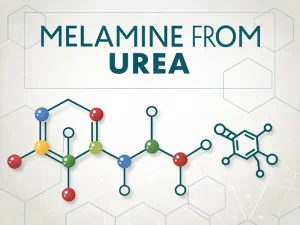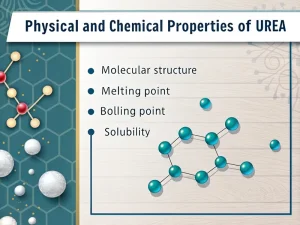
Urea VS Anhydrous Ammonia
Tech Blog urea vs anhydrous ammonia Nitrogen is the “lifeline” of crop growth, directly affecting leaf development, photosynthetic efficiency, and yield potential. For global farmers,

Nitrogen is the “lifeline” of crop growth, directly affecting leaf development, photosynthetic efficiency, and yield potential. For global farmers, choosing the appropriate nitrogen fertilizer is crucial, and the two most commonly used nitrogen sources in agriculture are urea and anhydrous ammonia.
When comparing urea and anhydrous ammonia, many growers want to know which nitrogen fertilizer performs better, is more cost-effective, and is easier to apply. This article explains their main differences, advantages, disadvantages, and how to choose the best solution for your planting system.
Urea is a dry granular nitrogen fertilizer containing 46% nitrogen (N). Due to its high nitrogen concentration, ease of application, and relatively low cost, it is the most widely used nitrogen fertilizer globally.
Chemical formula of urea: (NH₂)₂CO
Physical properties of urea: White odorless crystalline solid (usually made into granules for transportation), easily soluble in water, and non-corrosive under conventional storage conditions.
Source: Artificially synthesized by the Bosch method, generated by the reaction of ammonia (NH3) and carbon dioxide (CO ₂). Global-scale production is mainly used in the agricultural sector.
Anhydrous ammonia chemical formula: NH3 (pure ammonia, without water).
Anhydrous ammonia nitrogen content: 82% (by mass) – the variety with the highest nitrogen concentration among all agricultural fertilizers.
Physical properties of anhydrous ammonia: It is a colorless gas at standard temperature and pressure (STP), but must be stored and transported as a liquid under high pressure (100-150 pounds per square inch) or at low temperature (-33℃/-27°F). Has a strong irritant odor (similar to cleaning ammonia water) and is highly corrosive to copper, zinc, and damp skin.
Source: Also synthesized by the Haber-Bosch method, it is the primary raw material for producing urea by reacting atmospheric nitrogen with hydrogen from natural gas.
Advantages of urea
Advantages of anhydrous ammonia
Disadvantages of urea
Disadvantages of anhydrous ammonia
Direct cost: The unit price of nitrogen is usually higher than that of anhydrous ammonia.
Application cost: The equipment and labor costs are relatively low. Urea can be applied using conventional spreaders (such as a spreader, strip, or top dressing) without specialized high-pressure equipment.
Loss-related costs: If it is not possible to plow into the soil, additional urease inhibitors may need to be purchased to reduce volatilization losses.
Direct cost: The lowest unit nitrogen price.
Application cost: The initial investment is relatively high. Specialized equipment (a high-pressure storage tank and an injection knife) and trained operators are required, and the maintenance costs of high-pressure equipment are also higher.
Loss-related costs: Extremely low – deep injection reduces nitrogen loss, resulting in less fertilizer waste compared to surface urea application.
Storage: Simple and low-risk. Can be stored in dry warehouses, silos, or packaging bags. Although it is hygroscopic (absorbs moisture), it will only clump in high-humidity environments (adding anti-caking agents can solve this problem).
Transportation: No special requirements. As a solid, it can be transported by truck, railway, or container without the need for pressure vessels or temperature control. Due to its stable, non-hazardous nature, transportation costs are relatively low.
Storage: High risk and strictly regulated. It must be stored in thick-walled, pressure-resistant storage tanks (above or below ground), equipped with safety valves, pressure gauges, and leak detectors. The storage tank should be placed in a well-ventilated area, away from heat sources and densely populated areas.
Transportation: Strict supervision. It needs to be transported by specially designed high-pressure tank trucks or railway tank trucks. Drivers need to hold a Dangerous Goods Operations Certificate. Leakage can pose serious risks (toxic gases, burns); therefore, insurance and safety protocols will increase costs.
Application methods: flexible and diverse – can be applied by spreading, strip application, topdressing, or through irrigation systems (drip irrigation fertilization). Suitable for small equipment (manual fertilizer spreader) and large farm machinery.
Application time: Suitable for application before sowing, during sowing, and during growth. It can be applied multiple times to meet crop nitrogen requirements at different growth stages.
Crop compatibility: Safe for seedlings (no risk of burns when applied correctly), suitable for all major crops (grains, vegetables, fruits).
Application method: limited to injection (cannot be spread or drip-irrigated). Special equipment is required to inject fertilizer into the soil at a depth of 6-8 inches.
Application time: It is most suitable to apply 3-4 weeks before sowing or at the beginning of the growing season. Although topdressing during the growth period is feasible, it is less commonly used due to equipment limitations.
Crop compatibility: If the injection point is too close to the seeds or roots, it may cause seedling burns. Not suitable for shallow-rooted crops (such as lettuce, carrots) or no till systems (deep injection may damage soil structure).
The farm scale is small to medium-sized, or only equipped with conventional agricultural equipment (without anhydrous ammonia injection tools).
Flexible adjustment of application timing is required (e.g., staged fertilization of vegetable crops or topdressing during corn growth).
The soil itself is slightly acidic (the neutral nature of urea can prevent further decrease in soil pH).
Prioritize convenience of storage and operation (no hazardous-material permit required).
Large-scale planting (scale effects can offset equipment costs) and mainly planting crops with high nitrogen requirements (such as corn and wheat).
The unit nitrogen cost is the primary consideration factor – it is the cheapest option for bulk nitrogen supply.
Having the conditions for deep injection (which can reduce waste and environmental impact).
Capable of managing safety regulations, storage facilities, and equipment maintenance.
The choice between urea and anhydrous ammonia depends on your farm’s equipment, soil conditions, application timing, and safety factors. Urea and anhydrous ammonia are both effective nitrogen fertilizers, but they are suitable for different planting needs.
Urea has advantages in flexibility, ease of use, and safety, making it ideal for small and medium-sized farms, diverse crop planting, and fertilization scenarios during the growth period. Anhydrous ammonia performs outstandingly in terms of cost-effectiveness and environmental efficiency (when applied correctly), making it an ideal choice for large-scale, high-nitrogen crop cultivation.
By comprehensively considering cost, storage, application flexibility, and environmental impact, you can choose a nitrogen source that can maximize yield while minimizing expenses and sustainability risks.

Tech Blog urea vs anhydrous ammonia Nitrogen is the “lifeline” of crop growth, directly affecting leaf development, photosynthetic efficiency, and yield potential. For global farmers,

Tech Blog melamine from urea Melamine is well-known for its wide range of applications, but its raw material for production is surprisingly urea. For manufacturers,

Tech Blog physical and chemical properties of urea Urea, with the chemical formula CO(NH2)2, is a simple organic compound that plays a central role in

JINGJIANG MELAMINE POWDER
© JINJIANG MELAMINE